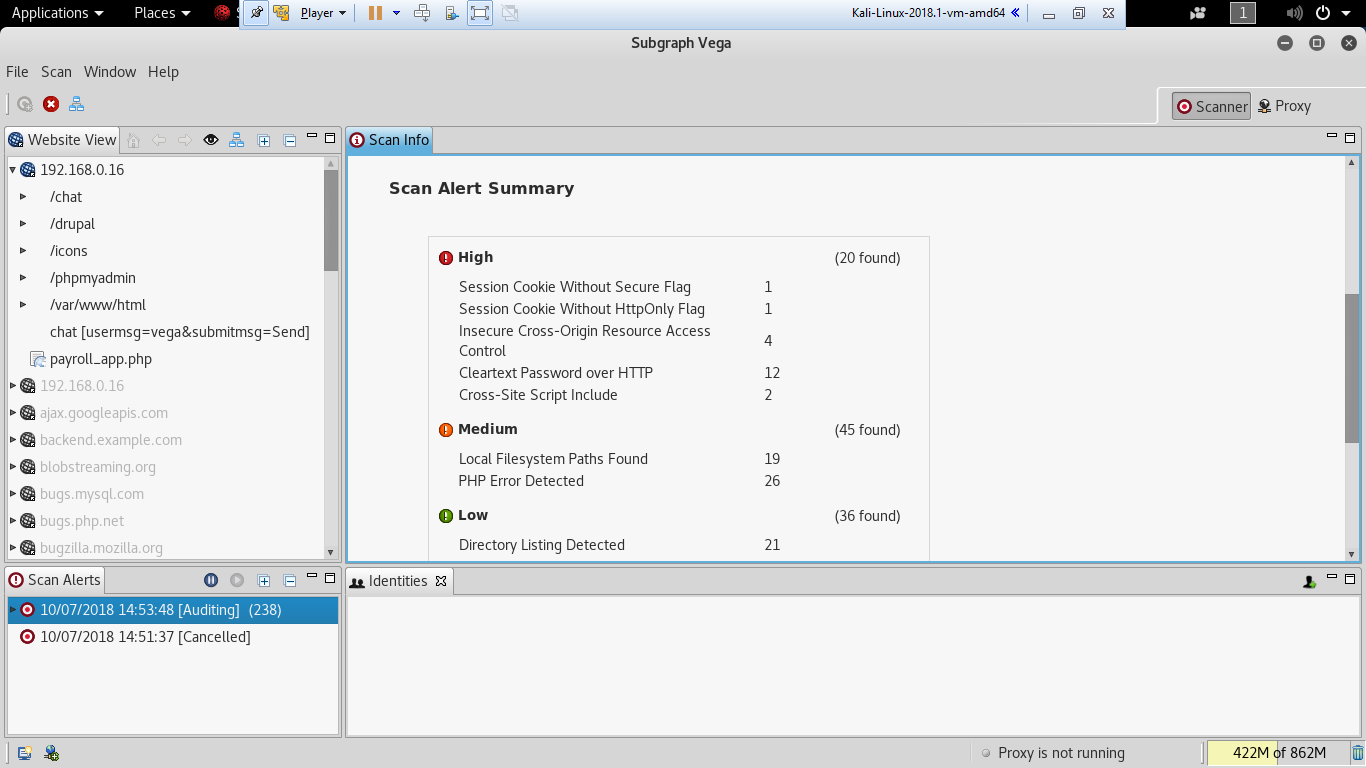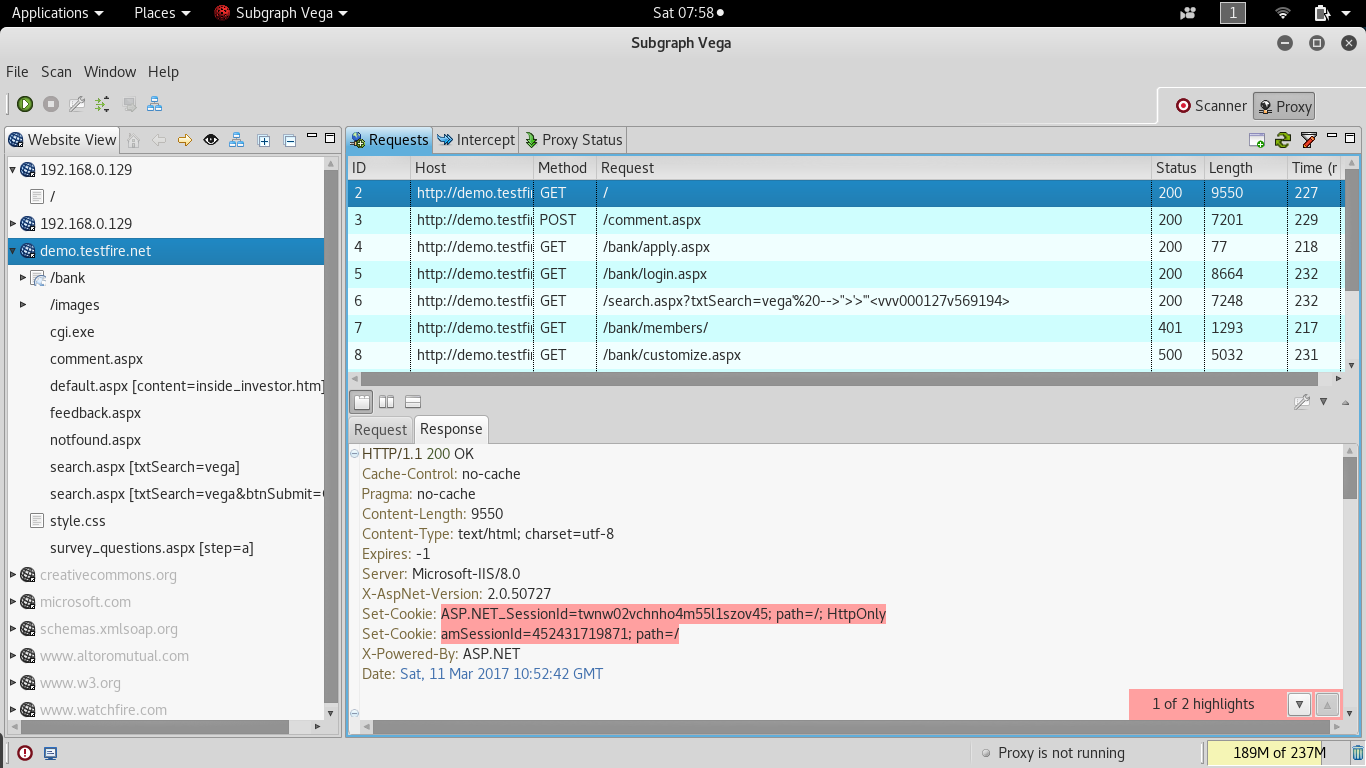Nikto is one of the most utilized active web application scanners, which performs comprehensive tests against web servers. Its basic functionality is to check for 6,700+ potentially dangerous files or programs, along with outdated versions of servers and vulnerabilities specific to versions of over 270 servers. Nikto identifies server misconfiguration, index files, HTTP methods, and also finds the installed web server and the software version. Nikto is released based on Open-General Public License versions (https://opensource.org/licenses/gpl-license).
A Perl-based open source scanner allows IDS evasion and user changes to scan modules; however, this original web scanner is beginning to show its age, and is not as accurate as some of the more modern scanners.
Most testers start testing a website by using Nikto, a simple scanner (particularly with regards to reporting) that generally provides accurate but limited results; a sample output of this scan is shown in the following screenshot:

The next step is to use more advanced scanners that scan a larger number of vulnerabilities; in turn, they can take significantly longer to run to completion. It is not uncommon for complex vulnerability scans (as determined by the number of pages to be scanned as well as the site's complexity, which can include multiple pages that permit user input such as search functions or forms that gather data from the user for a backend database) to take several days to be completed.
One of the most effective scanners based on the number of verified vulnerabilities discovered is Subgraph's Vega. As shown in the following screenshot, it scans a target and classifies the vulnerabilities as high, medium, low, and informational. The tester is able to click on the identified results to drill down to specific findings. The tester can also modify the search modules, which are written in Java, to focus on particular vulnerabilities or identify new vulnerabilities:

Vega can help you find vulnerabilities such as reflected cross-site scripting, stored cross-site scripting, blind SQL injection, Remote File inclusion, shell injection, and others. Vega also probes for TLS/SSL security settings and identifies opportunities for improving the security of your TLS servers.
Also, Vega provides special features in the Proxy section, which allow penetration testers to query the request back and observe the response to perform the validation, which we call manual PoC. The following screenshot shows the proxy section of Vega:

